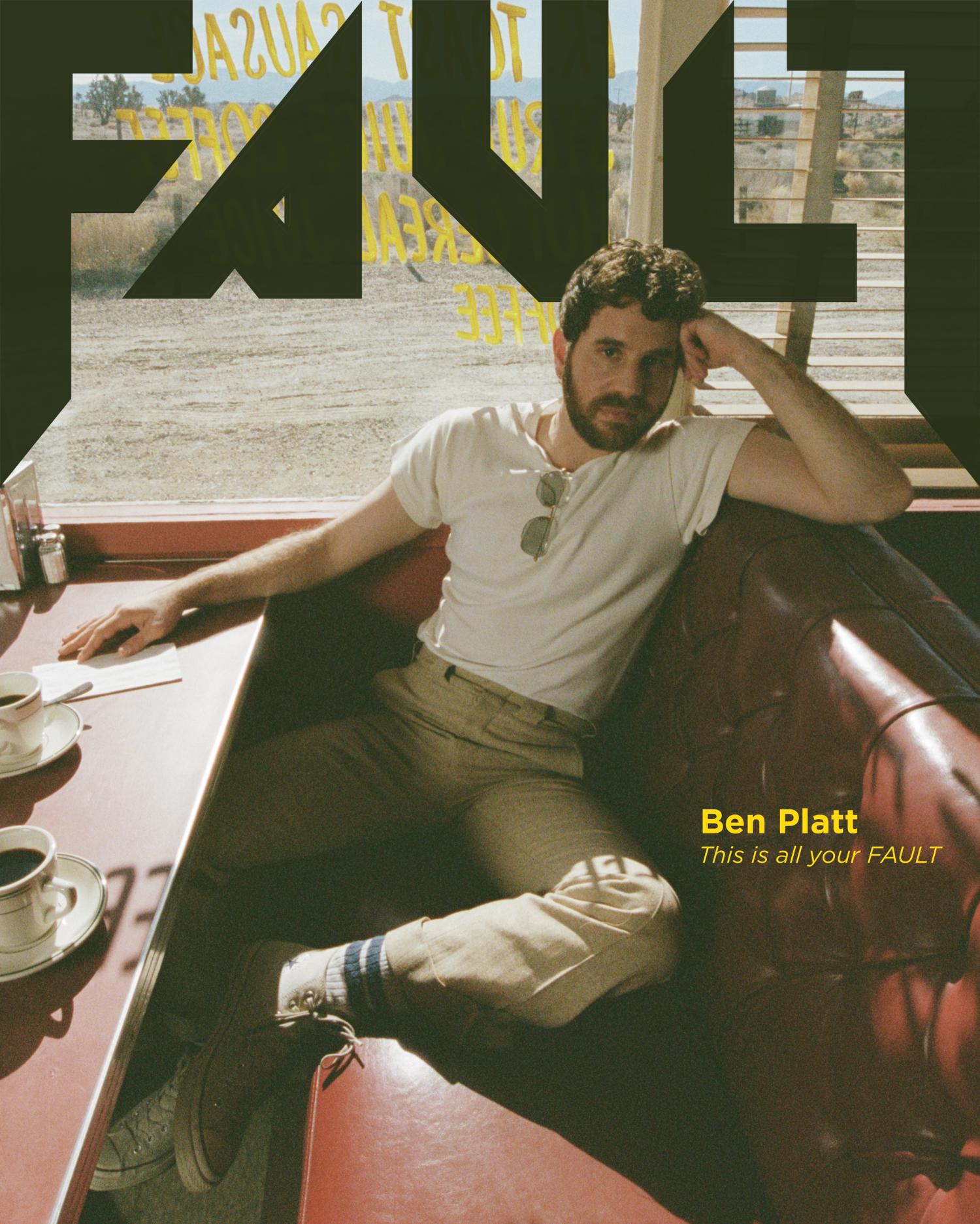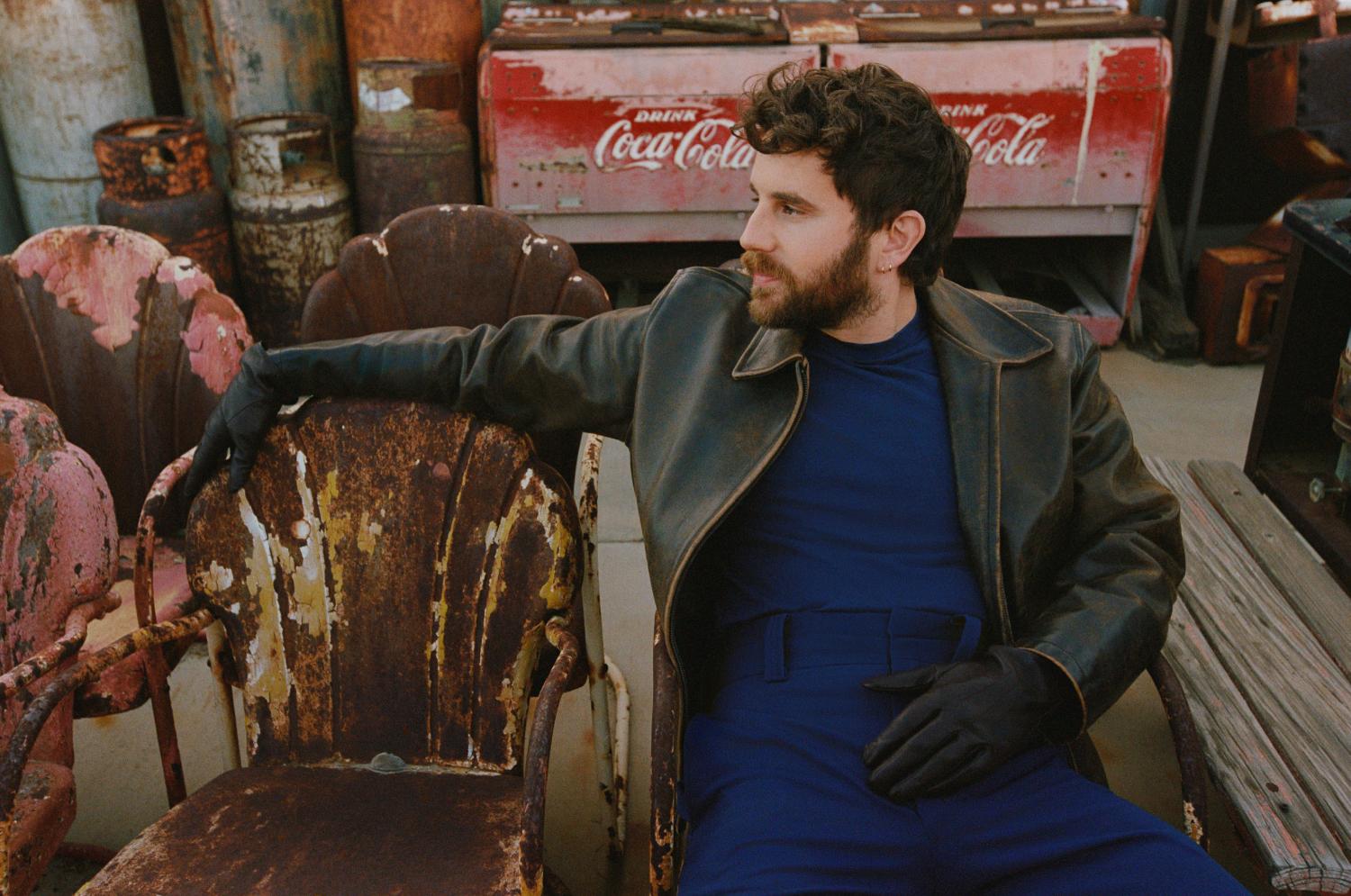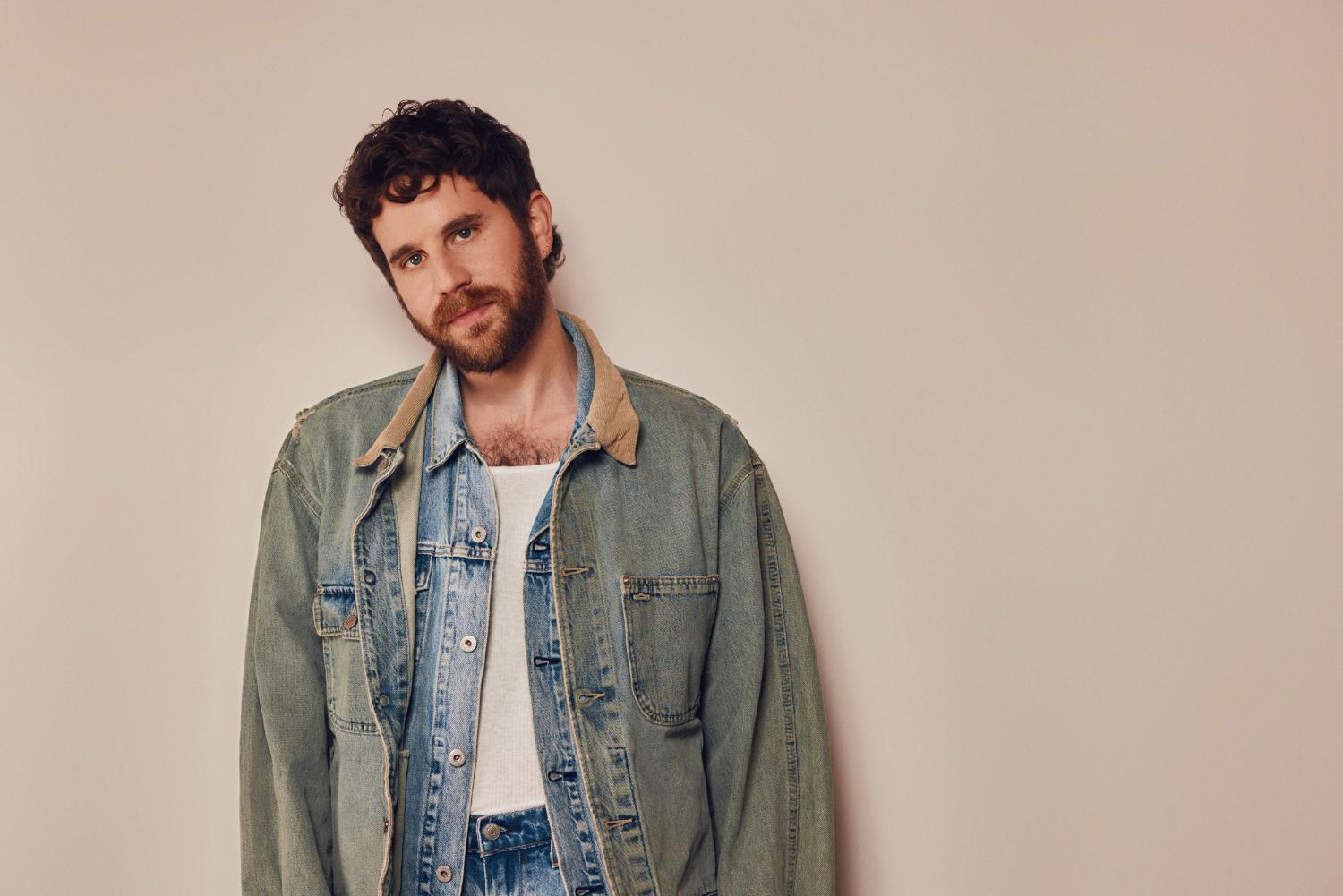Inside ‘Honeymind’ Ben Platt FAULT Magazine Cover Interview

Words: Fabio Magnocavallo
A multidimensional talent with an endless list of credentials, Ben Platt has his fingers in all the right pies. With an Emmy, Grammy, and a Tony award on his mantelpiece, Platt is an Oscar away from EGOT status. From hit musicals on Broadway (Parade and The Book of Mormon) and household-name movies (Pitch Perfect and Dear Evan Hansen) to a platinum-certified music career, Ben Platt is not an entertainer to underestimate.
Back for more action on the music front, Platt enters Pride Month with his first album in three years, Honeymind. Following 2021’s ‘80s-inspired Reverie, Platt is stripping away the synths and embracing queer love in all its forms with a more folk, Americana approach. Happily engaged to his fiancé Noah Galvin, Platt is letting us know he’s found his one and only while detailing the ups and downs leading up to this point.
To promote the album, Platt embarked on a one-off residency at The Palace on Broadway where he performed a lot of the material for the first time. Full of surprises, some of the special guests included Kacey Musgraves, Leslie Odom, Jr., Nicole Scherzinger, and Kristin Chenoweth. As he continues to make a splash with his performances and storytelling, we caught up with Platt to learn more about Honeymind and its creative process.

Your new album, Honeymind, takes on a more folk approach. Your last album, Reverie, in 2021, was more pop with inspiration from the ‘80s. How was it exploring the folk sound this time around? I know you made a lot of this album in Nashville.
I wrote a lot of it in Nashville. But even before that, I started working on it back in the spring of 2022 and was writing songs based on where I was personally. The kinds of things I was writing about and the subject matter, that was the sound that was really coming out. That was the most organic interpretation of what I was trying to communicate, and it ended up being in a way that I didn’t expect. I then ended up really liking that direction. I sort of doubled down and sought out some writers that really lived in that zone to see how we could let that flourish and lean a little more into that Americana folk sound. I’m super inspired by listening to a lot of Paul Simon, James Taylor, Fleetwood Mac, Carole King, and even Sufjan Stevens. Just that acoustic guitar forward narrative, like, super unadorned, no bells and whistles kind of music.
The album contains one collaboration, “Treehouse” with Brandy Clark. This is the first time any of your albums have had anyone featured on it. Why was Brandy the right artist to appear on the song?
I think a couple of things. We wrote the song together first, and we didn’t even really write it as an idea for a feature. I was more as such a fan of her as a songwriter and so we just really connected, and I love the song that we wrote. I think that she exists at this amazing crossroads of queer identity, Americana music, and musical theatre because she’s written Shucked and was nominated for a Tony and that really connected with exactly where I was at in terms of trying to bring all of those things together. I had so much respect for her and wanted to include her as just a person on the album. I then listened to the song more and more, it really felt like the kind of song that wanted to have two perspectives. There are a lot of love songs on the album, so I thought there really should be one where two people were coming together and not all just from my perspective. For me, the idea of putting someone on a song who has also written it is the only way I could imagine a feature, and so it just seemed like the perfect chemical combination of something we both really loved and believed in. She was totally the right voice for it.

As you said, the album contains a lot of love songs. Did that make the writing process easier as it reflects where you’re currently at in life?
A little easier in terms of, I wasn’t having to write this time about a lot of disappointment or pain or hurt. I mean, there are a couple of melancholy songs, such as “Andrew” and “Home Of The Terrified,” but definitely more joyful. I would say the challenge this time came from wanting to make sure I was expressing things in a unique way and in a new way. When you’re writing a love song, you’re adding to a very rich and enumerated canon. There are a lot of love songs, so I think the challenge for me was getting really particular about the experience of our relationship and the love that we share. I wanted to make sure that it was worthy of writing a song about and trying to be super harsh and judicious about what I was trying to say. But, in terms of emotionally, it was definitely one of the more joyful and free and happy-making processes.
You decided to name the album Honeymind, which a track is also titled. Did you write the song and title the album Honeymind or know you were calling the album that and then wrote the song?
The former. I’ve told this story on my social media, but I was on this hike with my partner, and I came up with the phrase “Honeymind” to describe what it feels like to be with him, and certainly only wanted to write a song. It started as, “That sounds like a great song,” so I wrote it with Michael Pollack who’s a long-term collaborator, an amazing guy. He just won the Grammy with Miley this year for “Flowers.” We kinda just sat on it and kept it in the mix. And then when it came time to name the album, I was listening through, sort of looking at all the song titles, and it really just felt like a great moniker for the whole thing. It came more so at the end when looking back and thinking what is the thing that encapsulates the whole feeling. I think whenever you name an album for a song, it sort of puts pressure on that song. I liked the idea that it was a very quiet, unassuming, very small, textural song so that was never going to be a single.
I read that most of the songs on the album were built around one take in the studio. I wonder if that was challenging or if that was also intentional to capture the initial emotion of the songs?
Yeah. Totally. I worked with Dave Cobb, who was my executive producer. He is sort of the reason we figured it would be a great match for this music. I wanted to make sure that it felt super organic and live feeling and had some imperfections and wasn’t too polished or anything. I feel like that’s where this sort of music thrives. His specialty is really maintaining that authenticity and that organic feeling. When I got down to record with him, he introduced me to his musicians. He was very much a proponent of getting comfortable playing the song together as a band and recording it once until we have one we really like, and then going in and futzing with the guitar or adding another layer or mixing the vocal a little bit but always having the core be this one take that we love. I think that having that at the heart of every song just allows it to feel like it’s really happening in the room and that it’s ephemeral and something that I’m really communicating straight through and isn’t too cleaned up. I really appreciated that he challenged me to keep it as real as possible.
Since you’re an actor and used to being in front of the camera, did visuals for this album come to you while in the studio?
Some yes and some no. I think for “Andrew,” I always knew. That song is from such a particular experience or, I guess, a series of experiences growing up as a queer person and having friends in middle school and in high school that were straight that I developed feelings for and then not really knowing where to put that melancholy. So the idea of my song mirrored with a young person having that experience was always what I wanted to do. For “Cherry On Top,” I had a couple of more conceptual, removed ideas. And then as I started to get closer to the time where we were actually gonna make visuals, I just fell in love with the idea of hitting the nail right on the head and just showing the relationship that it’s about. And then for the rest of them, which haven’t come out yet but will very shortly when this article comes out, I wanted to focus mostly on live performance capture. So a lot of the other songs are just captured with me in the studio performing them because I think, as I said, very much like the way that we’ve recorded the record, I feel like this, and part of the reason why we’re doing the residency is just that this album really exists in its best form when it’s just being performed live, and so I wanted to just capture the very super organic instrument focused versions of the songs instead of continuing to put outside concepts on them.
This is your first album under your new deal with Interscope Records. How has it been working with a new team and why were they the right label for you?
They’ve been wonderful. As they’ve shown with so many incredible artists, they just have a real understanding of how to shape a creative in terms of the actual creative of the album and the creative marketing. They have no interest in preconceived boxes and lanes, and they’re very much tailoring to artists they believe in. I sort of exist in a very particular spot in terms of the different things that I’ve done. I think that Interscope has done an amazing job of trying to utilise that particular kaleidoscope and do things that feel very particular to me. Sam Ribak, who is the amazing A&R person there, is the one who brought Dave Cobb to my attention. I have him to thank for that collaboration as well.
From May 28, you are going to be debuting songs from the album with a concert residency at The Palace. Obviously, you have a lot of onstage experience, but, does this come with any added pressure, given the venue’s iconic history?
Of course. I mean, any Broadway show has added pressure because it’s such a storied place to perform and such a special opportunity. I think on top of that, to have the opportunity to play myself in a Broadway house is very scary, and I do feel a lot of pressure. I also feel so much joy because my two favorite things in the world are getting to be part of a theatrical production, being on Broadway, performing my music live, and connecting with audiences when on tour. To finally have the opportunity to bring those two worlds together and to perform for the community whose audience I love the most, which is the Broadway community in a beautiful Broadway house, but have the freedom and the transparency to be singing my own music, is the absolute most amazing kind of joyful combination I can imagine. There’s definitely a lot of pressure and responsibility that I feel to deliver, but that is balanced out by how much excitement I have for just the joy of getting to do it 18 times.

The last time you were asked about your FAULT (characteristic flaw), you said that you worried too much. Have you worked on that?
I’m a little better at it, especially because I have Noah in my life. He’s really helpful in putting things in perspective for me and making me not quite as worried, but I definitely would say anxiety and over-worrying and wanting to over-prepare and over-control things to counteract that anxiety is still my fault.
When this comes out, fans will be listening to the album in its entirety. What do you want them to take away from the record?
I think always in any record, I want them to feel like they have a deeper understanding of just me and where I’m at as a person and that hopefully, they feel I’ve shared something with them. For people that are in love or have been in love or want to be in love or love to hear about love, I hope it rings true and they feel a connection to it. I think overall in a much broader sense, it’s hopefully a comforting and warm album, the kind of album that makes you feel good and brings you some joy. There’s nothing that’s too heavy or devastating or aggressive about it, and that’s just not really been who I am. I think it’s a little bit soft and kind, hopefully.